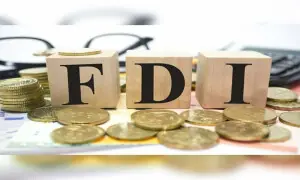Life expectancy rising in Pakistan, Economic Survey reveals
The latest Economic Survey of Pakistan, released in 2023-24, reports that life expectancy in the country has increased from 65.7 years in 2015 to 67.3 years in 2022.
This improvement is attributed to various government initiatives, such as programs to eliminate hepatitis, control diabetes, and expand the national immunization drive.
However, Pakistan’s current life expectancy of 67.3 years still lags behind the South Asian regional average of 71.6 years by 4.3 years.
The survey provides a detailed comparison of key healthcare indicators between 2015 and 2022, highlighting notable progress. For instance, child stunting has decreased from 41.4% to 34%, while DPT immunization coverage has risen from 72% to 85% for children aged 12-23 months.
Despite these advancements, the report acknowledges that Pakistan’s health expenditure as a percentage of GDP, currently at just 1%, remains low compared to the South Asian average of 3.1%.
This low investment is reflected in the country’s relatively high maternal mortality rate of 138 per 100,000 live births and an infant mortality rate of 30.8 per 1,000 live births in 2021.
The survey emphasizes the need to allocate a greater share of GDP towards public health expenditure to achieve universal health coverage.
It also notes that the number of registered healthcare professionals, such as doctors and dentists, has increased by 5.9% and 8.7% respectively between 2022 and 2023, indicating efforts to bolster the healthcare workforce.
The survey recognized that Pakistan’s current budgetary allocations to the health sector, as a percentage of GDP, are low. This is a critical issue when it comes to achieving universal health coverage. The report emphasizes the crucial need for the government to allocate a significant percentage of the country’s GDP towards public health expenditures.
While Pakistan’s health expenditure as a percentage of GDP remains very low at present, the survey suggests there are positive indications that this allocation may increase over time, in comparison to previous years. This implies a potential for greater investment in the healthcare system going forward.
For the latest news, follow us on Twitter @Aaj_Urdu. We are also on Facebook, Instagram and YouTube.

















Comments are closed on this story.